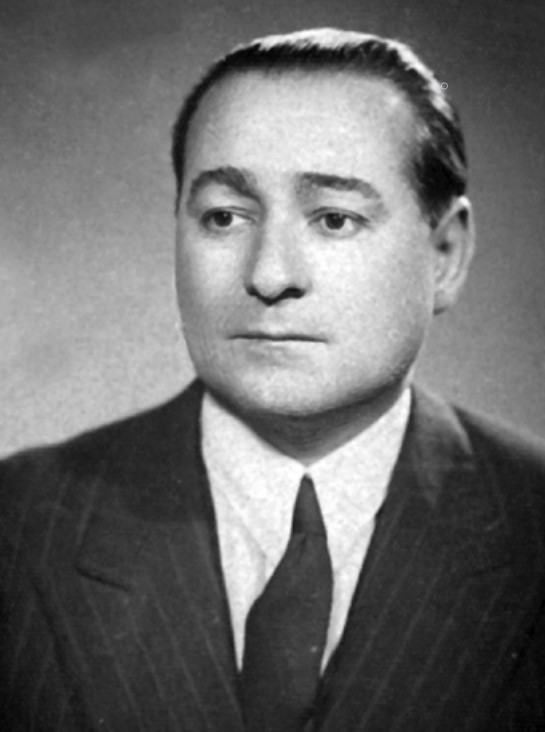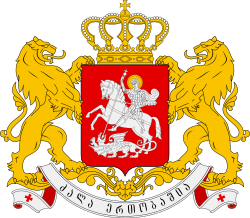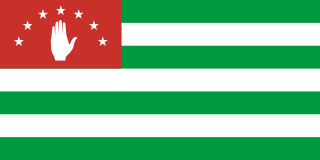
Parliamentary elections were held in Azerbaijan on 5 November 2000, although a re-run had to be held in 11 constituencies on 7 January 2001 due to "massive irregularities". The result was a victory for the New Azerbaijan Party, which won 75 of the 125 seats.

Parliamentary elections to the National Assembly of Azerbaijan were held in Azerbaijan on 12 November 1995, with a second round on 26 November. However, the results were declared invalid due to fraud in 15 constituencies, with fresh elections held on 4 February 1996. The result was a victory for the New Azerbaijan Party, which won 59 of the 125 seats. Voter turnout was 86.1% for the proportional representation part of the elections.
General elections were held in newly independent Bangladesh on 7 March 1973. The result was a victory for the Bangladesh Awami League, who won 293 of the 300 seats, including eleven constituencies where they were elected unopposed without a vote. Voter turnout was 54.9%.

Constituent Assembly elections were held in the Democratic Republic of Georgia between 14 and 16 February 1919. The electoral system used was party-list proportional representation using the D'Hondt method in a single nationwide district. The result was a victory for the Social Democratic Labour Party of Georgia, which won 81% of the vote, and 109 of the 130 seats. In by-elections held in spring, they lost four seats and the Armenian Party in Georgia - Dashnaktsitiuni and the Georgian National Party both won seats.

Presidential elections were held in Georgia on 5 November 1995. The result was a victory for Eduard Shevardnadze of the Union of Citizens of Georgia, who won 77.0% of the vote, with a 68.3% turnout.

General elections were held in Turkey on 12 October 1969. The electoral system used was party-list proportional representation using the D'Hondt method in 66 electoral districts. The result was a victory for the Justice Party, which won 256 of the 450 seats. Voter turnout was 64.3%.

General elections were held in Turkey on 10 October 1965. The result was a victory for the Justice Party, which won 240 of the 450 seats. Voter turnout was 71.3%.

General elections were held in Turkey on 15 October 1961. The electoral system used was party-list proportional representation with the D'Hondt method in 67 electoral districts. In order to receive seats in a district, parties needed to win a Hare quota in that district. The result was a victory for the Republican People's Party, which won 173 of the 450 seats. Voter turnout was 81.4%.

General elections were held in Turkey on 21 July 1946, the first multi-party elections in the country's history. The multiple non-transferable vote electoral system was used. The result was a victory for the Republican People's Party, which won 395 of the 465 seats.

General elections were held in Turkey on 14 May 1950, using the multiple non-transferable vote electoral system. The result was a landslide victory for the opposition Democratic Party, which won 408 of the 487 seats.

General elections were held in Turkey on 2 May 1954.The electoral system used was the multiple non-transferable vote. The result was a victory for the Democrat Party, which won 503 of the 541 seats. Voter turnout was 88.6%.

General elections were held in Turkey on 27 October 1957. The electoral system used was the multiple non-transferable vote, with each electoral district electing an average of 9 members. The result was a victory for the Democrat Party, which won 424 of the 610 seats.

Parliamentary elections were held in Armenia on 5 July 1995, with a second round on 29 July. There were 150 constituency seats and 40 elected on a national basis using proportional representation. The result was a victory for the Republican Bloc, which won 88 of the 190 seats. Overall voter turnout was 54.3%.

Parliamentary elections were held in Armenia on 30 May 1999. There were 75 constituency seats and 56 elected on a national basis using proportional representation. The result was a victory for the Unity Bloc, which won 62 of the 131 seats. Overall voter turnout was 51.7%.

Presidential elections were held for the first time in Armenia on 17 October 1991. The result was a victory for Levon Ter-Petrossian, who won 83% of the vote. Turnout was 70%.

Presidential elections were held in Georgia on 26 May 1991. The result was a victory for Zviad Gamsakhurdia of the Round Table-Free Georgia party, who won 87.6% of the vote, with an 82.9% turnout.

General elections were held in Georgia on 11 October 1992, in which voters elected both the Parliament and the Chairman of Parliament, who also acted as Head of State as the President, Zviad Gamsakhurdia, was in exile after being outsted in a coup in January. Independent candidate Eduard Shevardnadze was the only candidate in the election for Head of State, whilst the Peace Bloc won the most seats in Parliament. Voter turnout was 74.2%.

Presidential elections were held in Georgia on 9 April 2000. The result was a victory for Eduard Shevardnadze of the Union of Citizens of Georgia, who won 82.0% of the vote, with a 75.9% turnout.

Parliamentary elections were held in Georgia on 5 November 1995, with a second round on 19 November. The result was a victory for the Union of Citizens of Georgia, which won 108 of the 235 seats. Voter turnout was 66.6%

Parliamentary elections were held in Tajikistan on 27 February 2000, with a second round in 11 of the 41 constituencies on 12 March. The result was a victory for the People's Democratic Party of Tajikistan, which won 36 of the 63 seats. Voter turnout was 93.4%.













